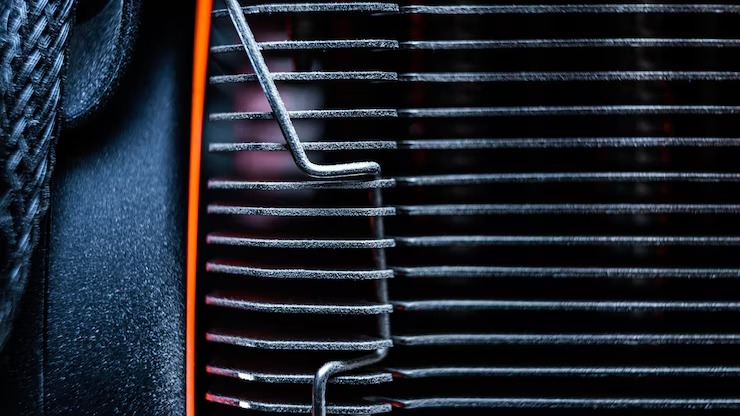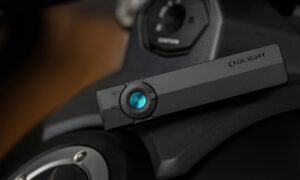When it comes to maintaining your high-use Honda car, one of the key components to monitor is the air filter. The air filter plays a vital role in ensuring that your engine receives the clean air it needs for efficient combustion, which in turn affects the performance, fuel efficiency, and longevity of the vehicle. Proper air filter maintenance is essential, especially for those who rely on their Honda cars for daily, haigh-mileage driving. Whether you use your vehicle for work or leisure, an improperly maintained air filter can lead to reduced engine performance, poor fuel economy, and even engine damage. If you’re looking for expert advice or parts, visiting a Honda dealership near Roanoke, VA can help you get the right products and service. This article will delve into the importance of air filter maintenance, how to perform routine checks, signs of a dirty air filter, and how it impacts your Honda car’s performance.
The Role of the Air Filter in Your Honda Car
The air filter in your Honda car serves a simple yet essential purpose: it prevents dirt, dust, debris, and other contaminants from entering the engine’s intake system. The filter is located in the intake air duct and works by trapping these particles before they can reach the engine’s cylinders. Clean air is crucial for optimal combustion, which fuels the engine and ensures that your car runs smoothly. Over time, the air filter can become clogged with debris, reducing the airflow and compromising engine performance.
In high-use vehicles, like those used for commuting, deliveries, or work purposes, the air filter can become dirty more quickly. This is especially true if the vehicle is frequently driven on dusty roads, in areas with heavy traffic, or under extreme weather conditions. Keeping the air filter in top shape is critical to maintaining your car’s fuel efficiency and preventing long-term engine issues.
Signs That Your Air Filter Needs Maintenance
It’s essential to regularly inspect and maintain your air filter, but how can you tell if it’s time for a change or cleaning? Here are some common signs that your Honda car’s air filter may be in need of attention:
1. Reduced Engine Performance
A clogged or dirty air filter reduces the amount of air that reaches the engine, which can lead to decreased engine performance. If you notice that your Honda car is struggling to accelerate or feels sluggish, it could be a sign that the engine is not getting enough air.
2. Decreased Fuel Efficiency
When the engine cannot get enough air due to a clogged filter, it has to work harder to compensate, which can lead to a noticeable drop in fuel efficiency. If your Honda is consuming more fuel than usual, a dirty air filter may be one of the culprits.
3. Unusual Engine Sounds
A dirty air filter can cause the engine to run inefficiently, which may lead to unusual sounds such as sputtering or a rough idle. If you notice these types of sounds, it’s a good idea to check the air filter.
4. Check Engine Light
In some cases, a clogged air filter can trigger the “Check Engine” light on your dashboard. The reduced airflow caused by the blocked filter can affect the air-to-fuel ratio, potentially causing the engine control unit (ECU) to detect a problem.
5. Increased Emissions
If your vehicle’s air filter is dirty, it can affect the air-fuel mixture, which can lead to higher emissions. If your car emits more exhaust smoke than usual, the air filter may be a contributing factor.
How Often Should You Replace Your Air Filter?
The frequency with which you should replace your air filter depends on several factors, including your driving habits and the environment in which you typically drive. For most Honda models, it’s recommended to inspect the air filter every 12,000 to 15,000 miles. However, for those who drive in harsh conditions—such as on dusty roads, in stop-and-go traffic, or during extreme weather—it may be necessary to replace or clean the air filter more frequently.
If you’re unsure about when your air filter was last replaced or checked, having a quick inspection done by a qualified technician can give you peace of mind and help you avoid further engine issues down the line.
How to Check and Clean Your Air Filter
Performing air filter maintenance on your Honda car is a simple process that can help prolong the life of your engine and maintain optimal performance. Here’s a step-by-step guide on how to check and clean the air filter:
1. Locate the Air Filter
The air filter is typically housed in a black plastic casing in the engine bay. Consult your owner’s manual for the exact location, as it can vary depending on the model and year of your Honda car.
2. Remove the Air Filter
Once you’ve located the air filter, remove the casing cover. This can usually be done by unscrewing or unclipping the cover. Take care to remove any screws or clips gently, so you don’t damage any parts. Once the casing is open, take out the air filter carefully.
3. Inspect the Filter
Hold the air filter up to a light source. If you can see light through the filter, it’s likely in good condition. If the filter looks dark, clogged, or you can’t see much light through it, it’s time for a replacement or cleaning.
4. Clean the Filter (If Reusable)
If your Honda uses a reusable air filter (such as a K&N filter), you can clean it by gently tapping it to remove loose debris. You can also use compressed air to blow out any dust or dirt. If the filter is very dirty, wash it with warm, soapy water and allow it to dry completely before reusing it.
5. Replace the Filter (If Necessary)
If your air filter is beyond cleaning, or if it’s showing signs of significant wear, it’s time to replace it. Make sure to purchase a filter that is compatible with your Honda model. You can get a replacement from an authorized parts retailer or auto service center.
6. Reassemble the Air Filter Housing
After replacing or cleaning the filter, carefully place it back into the air filter housing and reattach the cover. Make sure the housing is securely fastened to prevent any air leaks.
Benefits of Regular Air Filter Maintenance
Regular maintenance of the air filter in your high-use Honda car offers several benefits that contribute to the overall health and performance of the vehicle:
1. Improved Fuel Efficiency
A clean air filter ensures that the engine receives the proper amount of air needed for combustion. This results in better fuel efficiency, saving you money on gas over time.
2. Better Engine Performance
With a clean air filter, the engine can perform at its best, providing smoother acceleration, improved power output, and a more responsive driving experience.
3. Longer Engine Life
Consistently maintaining the air filter helps prevent contaminants from entering the engine, reducing wear and tear. By keeping dirt, dust, and debris out of critical engine parts, you can extend the life of your vehicle’s engine.
4. Reduced Emissions
A well-maintained air filter helps maintain the proper air-fuel mixture, leading to lower emissions. This is especially important if you live in an area with strict emissions standards.
Conclusion
Air filter maintenance is a simple yet crucial task for keeping your high-use Honda car running smoothly. A clean, well-maintained air filter ensures optimal engine performance, better fuel efficiency, and a longer-lasting engine. Regular inspections and replacements will save you money in the long run by preventing potential engine problems and maintaining your vehicle’s efficiency. Whether you’re driving in dusty conditions or navigating heavy traffic, taking care of your air filter is a small step that makes a big difference. Investing time in routine maintenance ensures your Honda continues to perform reliably and efficiently on every drive.




























